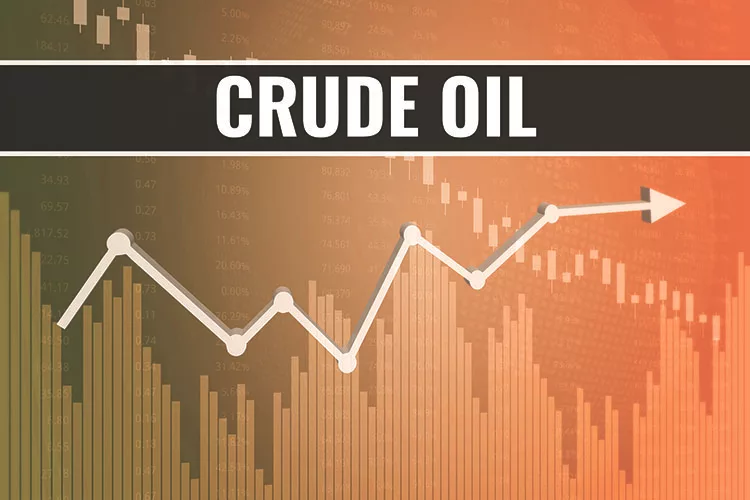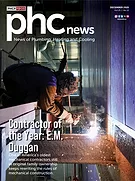February brings good news for Alaska and ConocoPhillips. The energy exploration and production company will develop the Willow project on the Alaskan North Slope following the U.S. Department of the Interior’s Record of Decision and recent denial of the plaintiff’s request for an injunction in the Ninth Circuit Court of Appeals.
The Ninth Circuit Court ruled against opponents of the project for injunctive relief to immediately stop work on the project. Site work will continue while the court continues the case. Opening briefs were due on Dec. 29, 2023, and consolidating briefs were due on Jan. 12, 2024.
Willow underwent five years of regulatory and environmental review. It is expected to produce an estimated 600 million barrels during the lifetime of the project. It will provide between $8 billion and $17 billion in new revenue for the federal government, the state of Alaska and Alaska Native communities, per the U.S. Bureau of Land Management.
U.S. oil companies and refiners are most likely to see a challenging 2024. Bank of America (BofA) analysts commented in early January that they expect Brent to average $80/barrel in 2024.
In 2023, crude futures lost more than 10 percent in a tumultuous year of trading, influenced by geopolitical turmoil and concerns about the oil output levels by major producers around the world.
“We expect oil to remain volatile, exacerbated by outsize paper market influence, informed by geopolitics and The Organization of the Petroleum Exporting Countries (OPEC) policy,” notes BofA.
OPEC and its allies (OPEC+) announced that output reduction will be about 6 million barrels/day — about 6 percent of the global supply. According to BofA, “the greater challenge for investors in 2024 is not to underestimate Saudi’s commitment to oil while acknowledging that Brent could remain in the $70 to $90 band due to non-OPEC output and uncertain demand outlook.”
As of this writing, oil pricing finds WTI at $72.91/barrel and Brent at $78.18/barrel. With Saudi pricing lowered in line with the spot market, margins may be boosted for clients using the kingdom’s cargoes as their baseload, refiners and traders note.
Hostile Actions Reroute Commercial Vessels
As mentioned in the January issue, Israel’s prosecution of the war with Hamas, the recent Israeli killing of Hezbollah senior commander Wissam al Tawil via an air strike in Herbert Salem village (southern Lebanon), attacks on U.S. naval and commercial vessels in the Red Sea by Iranian surrogates, and the arrival of an Iranian warship in the Red Sea has escalated the possibility of expanded hostilities in the region and U.S. involvement.
Some companies, including BP and Equinox, have paused all transits through the Red Sea and rerouted their vessels via the Cape of Good Hope instead of using the Suez Canal.
Due to Houthi attacks, the Chinese state-owned shipping firm COSCO has become the latest company to suspend its routes to Israel through the Red Sea.
In addition, due to increases in hostile action by the Chinese navy in the South China Sea, the presence of Chinese naval vessels off the Israeli coast and the possibility of an escalation of U.S. involvement in both regions, the supply chains for offshore raw materials, finished and unfinished PVF products (welding fittings, forged flanges, steel pipe and valves) are at high risk for disruption.
As of this writing, pricing for commodity carbon-steel butt-welding fittings and forged-steel flanges remain unchanged. However, with the pricing of U.S. prime scrap rising in January, HRC steel rising to $1,100 and offshore steel expected to increase in first-quarter 2024, it is highly recommended that you remain in close contact with your manufacturer/supplier to forgo any surprises.
Construction Employment, Data-Center Construction Rise
The Bureau of Labor Statistics’ latest monthly employment report, released Jan. 5, shows gains in nearly all construction sectors, except for heavy civil construction, which lost 500 jobs.
“The above-average wages that the construction industry pays have helped contractors add workers,” says Ken Simonson, chief economist of the Associated General Contractors of America (AGC).
The new AGC survey reports that more than two-thirds of the responding contractors say they intend to expand this year, he adds. However, they expect it will be as hard, or harder, to do so than in 2023.
The AGC and Sage Construction and Real Estate forecast report indicates a mixed outlook for 2024. Changes in demand for projects and how to adopt new technologies are the largest questions facing contractors, according to the survey of 1,290 AGC contractor members.
AGC CEO Stephen Sandherr states that contractors are struggling to cope with significant labor shortages, the impact of higher interest rates and input costs, and a supply chain that is still far from normal.
“Demand for different types of projects is changing,” he says. “Respondents to this year’s outlook survey are less confident about growth prospects for many market segments than only a year ago.
“They are most optimistic about a range of public sector market segments, including water and sewer projects, transportation, federal projects and bridge and highway. Conversely, they predict private sector demand will be less robust for segments such as manufacturing, multifamily residential, and will also decline for lodging, retail and private office construction.”
Simonson notes: “The largest increase in optimism from the previous survey is for data center construction, with a net positive reading of 20 percent. That’s up from 12 percent a year ago, and I think it reflects all the enthusiasm about a generator of artificial intelligence, which is a huge user of data-center capacity.”
The demands of the construction sector for large projects continue to drain the pool of skilled labor by drawing large numbers from local markets, presenting problems for smaller construction projects in various industry sectors.
With this in mind, the PVF Roundtable continues to work diligently to support the education and training of young associates in the PVF sector by providing scholarships through the PVF Charitable Foundation.
PVF Roundtable News
The PVF Roundtable Golf Tournament and TroutBlast are the major fundraising events scheduled for 2024. The Weldbend Corp., Ferguson Industrial and MRC Global are key sponsors of these events.
The next meeting of the PVF Roundtable will be the Cocktails and Commerce Tabletop Show and Membership Drive to be held Feb. 13, 2024, at Houston’s The Bell Tower on 34th, 713-868-2355. Tabletops will commence at 2 p.m. CST, and networking will begin at 4 p.m. CST.
This will be a free event for all attendees, so mark your calendars accordingly. You do not want to miss it!
As a member of the board of directors, and I speak for all members, we sincerely thank you for your participation in these events.
With the geopolitical uncertainties in the world today and the influence they have on the PVF market, these meetings are of the utmost importance for you and your associates. These events provide the platform to share information, discuss pertinent issues, meet new contacts, develop long-lasting friendships, and pursue new opportunities in the industry.





